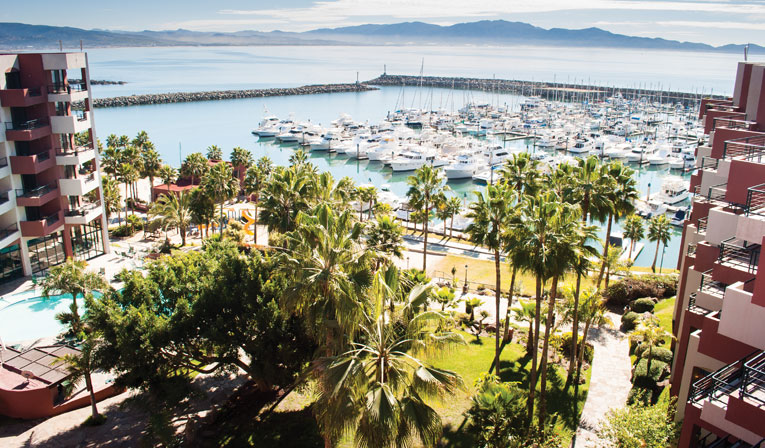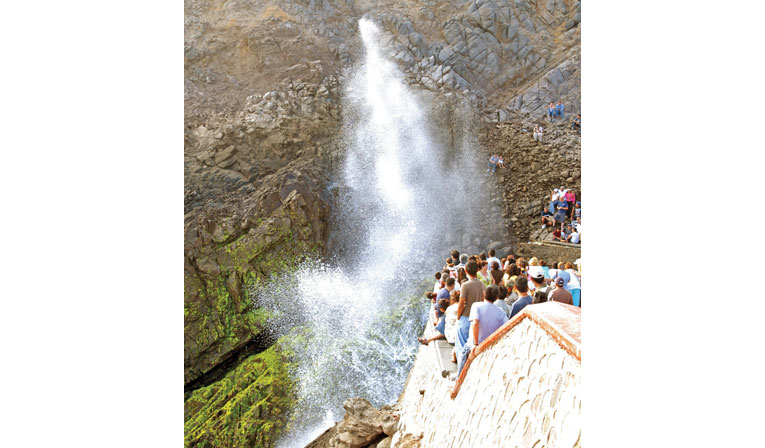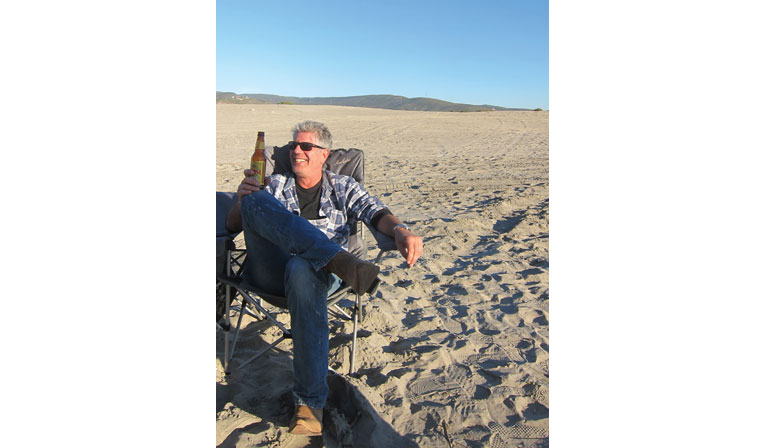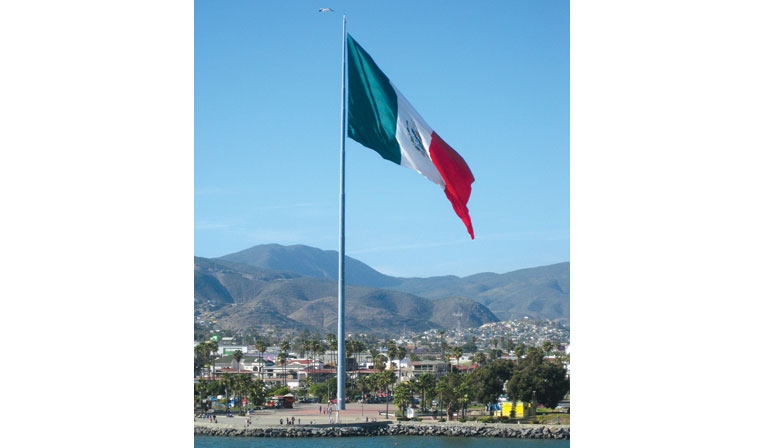Photo courtesy of Baja California Tourism
Ensenada, in Mexico’s Baja California, provides Great Lakes boaters with an exotic escape during the cold winter months.
Summer passes quickly in northern climates. All too soon, ice has locked up the Great Lakes, and boats sit in storage buildings and under shrink wrap, waiting for spring.
That’s not all bad news, however. The offseason can provide valuable opportunities to travel and discover new boating playgrounds. Many Great Lakes boaters, like their East Coast counterparts, have discovered Mexican Caribbean destinations like Isla Cozumel, Playa del Carmen and Cancún.
A smaller group heads west, bound for Los Cabos at the tip of Mexico’s Baja Peninsula. Few will turn their eyes to the scalloped Pacific coast and rolling green hills of northern Baja’s border country, just 78 miles south of San Diego.
Earlier this year, I traveled to Ensenada, Baja California, to see what treasures it might hold. I quickly learned what West Coast boaters have known for years. This is more than a city of 280,000 people, more than the first major port south of the U.S. Mexico border, more than the terminus of the venerable, 66-year-old, 125-mile Newport to Ensenada International Yacht Race.
She’s called the “Cinderella of the Pacific,” and she’s a city worthy of the title. Not only is the city home to world-class boating and fishing, myriad cultural attractions, and diverse recreational opportunities, it lies adjacent to the Valle de Guadalupe, a wine-growing region celebrated throughout Mexico and garnering increasing attention worldwide.
Getting there
Great Lakes visitors likely will arrive in Ensenada by air or land. You can book a flight to Tijuana or San Diego, then rent a car, hop on public transportation, or investigate shuttle options with your hotel (Ensenada has more than 3,500 rooms, from one- to five-star).
For example, Hotel Coral & Marina guests who fly into San Diego can meet a hotel shuttle at the airport or at the San Ysidro Port of Entry, which is an easy trolley ride from downtown. At San Ysidro, U.S. Interstate Highway 5 crosses into Tijuana, and from there the shuttle takes you along magnificent México 1; past Fox’s Baja Studios at Rosarito, where Titanic was filmed; and right to the hotel’s front door.
If you decide to drive across the border (see sidebar to get information about required documentation and Mexican insurance), you may be surprised to discover that it’s a complete nonevent. It’s absolutely effortless from the U.S. side.
This is the busiest land border crossing in the world, with roughly 50,000 vehicles and 25,000 people on foot crossing each day. Historically, lines have been quite long on the Mexico side as vehicles and pedestrians, including countless daily commuters, wait to cross into the United States. Since I had a flight home out of San Diego, I was told to allot plenty of extra time. It took nearly two hours.
Those monstrous wait times could be a thing of the past, however. At press time, San Diego news outlets reported that, after years of construction and lane closures, U.S. border authorities have opened all 25 lanes to northbound traffic. Waits are now measured in minutes rather than hours.

Photo courtesy of Hotel Coral & Marina
Did You Know?
 ∗ Ensenada is the birthplace of the scrumptious fish taco (and claims also to be the birthplace of the margarita).
∗ Ensenada is the birthplace of the scrumptious fish taco (and claims also to be the birthplace of the margarita).
∗ This is a hotspot for Carnaval. Roughly 300,000 visitors converge on Ensenada for the annual wintertime celebration.
∗ La Bufadora is one of North America’s largest blowholes, shooting seawater 100 feet in the air.
∗ Craft beer is the latest trend in Ensenada, where beer festivals draw makers from northern Baja, mainland Mexico and southern California.
∗ World-class surfing is found at “Killers,” off Isla Todos Santos, now part of a World Surfing Reserve. Wave faces can reach 60 feet in height.
∗ The national park at San Pedro Mártir features the Baja Peninsula’s highest peak, 10,157-foot Picacho del Diablo, and Latin America’s second-largest observatory.
∗ The Valle de Guadalupe is often compared to a young Napa Valley, yet it’s one of the New World’s oldest wine-growing areas. It now has more than 60 wineries in a 35-square-mile area. — H.S.
Photo courtesy of Baja California Tourism
Photo by Ivan Cortez
Her face toward the sea
Ensenada, one of the Californias’ earliest settlements, has always turned her face to the sea. The native Yuman Indians would travel to the waterfront for seafood (the Pai-Pai, Kumeyaay, Cucapá and Kiliwa nations continue to live in the area today). Early settlers relied on the sea as their lifeline for food, supplies and communications.
Today, residents and visitors alike stroll the waterfront malecon, watch the cruise ships come in, and check out the fresh catch at the outdoor market. And they take advantage of the city’s world-class boating facilities so they can cruise, dive, paddle, and fish the impossibly blue Pacific waters.
For trailerboaters, there are launch ramps at the three Ensenada marinas — Hotel Coral & Marina, Baja Naval and Ensenada Cruiseport Village — as well as at the Estero Beach Resort, for a fee if you’re not a guest. You also can use the cement launch ramp at Punta Banda Rincon, and if you have a kayak, canoe or dinghy, there are beach launch facilities at Campo La Jolla.
If you’ve arrived in Ensenada by air, or by car minus a trailerable boat, don’t worry. This city offers plenty of opportunities to get out on the water. The marinas are overflowing with local charter boats and captains who are willing to take passengers on half- or full-day trips to enjoy fishing, snorkeling, scuba diving, whale-watching, and even surfing.
At Isla Todos Santos, just 12 miles offshore, wave faces can reach 60 feet at a famous site called “Killers.” Professionals flock here, and this past June, the iconic breaks from Salsipuedes to Killers was designated the sixth World Surfing Reserve.
During my stay, I took advantage of a sunset cruise in Bahía de Todos Santos and along the Ensenada waterfront aboard the 47-foot Bertram Papa Loco. Our captain, Miguel, worked as a professional fisherman on a tuna seiner for many years. These days, he offers his expertise to sportfishing enthusiasts.
Boating is the obvious highlight, but if you’re looking for land-based adventure, Ensenada is a good base from which to try horseback-riding, hiking, mountain biking, and ATV excursions. The national parks at Sierra de Juarez and San Pedro Mártir aren’t too far away, either.
The Ruta del Vino
You’ll definitely want to visit Baja California’s Ruta del Vino, the renowned Valle de Guadalupe wine country. Major hotels like the Hotel Coral offer shuttle service so you can tour the Vine and Wine Museum, which opened in 2012 and remains the only such facility in Mexico; savor a meal at one of the many diverse wine-country restaurants, such as the new farm-to-table, open-air Malva Cocina de Baja California; and sample the various wines in the valley, which is now home to more than 60 wineries. The oldest, Bodegas de Santo Tomás, opened in 1888.
At the five-year-old Hacienda La Lomita winery, you can taste signature Baja California wines such as the leggy, full-flavored 2011 Pagano (in its über-cool square bottle); the bright, polished 2011 Tinto de la Hacienda; and the smooth, buttery 2013 Espacio Blanco while cleansing your palate with locally made artisanal breads, and marmalade and fresh Paloma cheese made by the owner’s mother.
“Winemaking is getting to be a very big business,” says Fernando Pérez Castro, 37, Hacienda La Lomita’s proprietor. “It’s about 20 percent of our economy, and it’s growing 0.5 percent annually.
“It’s an exciting time,” he continues. “There are five or six new wineries being built right now, and several new places to eat. I’ve lived on the border all my life, and I can honestly say that the 2008 economic crisis was great for this area. The spring-break and party places closed, and they’re now art galleries. There’s amazing mescal, street food, craft beers. And you’re going to meet owners, chefs, all kinds of people who are passionate about their community and about what they’re doing.”
Five years ago, Ensenada first emerged on the radar in Mexico as one of the most important places to eat. Part of that, Castro says, is the wine produced in the valley. The other part is “how careful we are with our food.”
“It’s mind-blowing what’s happening in gastronomy here,” he comments. “‘Baja Med’ is a big movement that’s giving Mexican cuisine a new name, and because it’s a mixture of southern California and northern Baja, it unites us all. It’s like there’s no border.”
Indeed, this is a rapidly transforming economy, thanks in part to the Universidad Autónoma de Baja California. Not only was UABC ranked the second-best public university in the country in a national 2008 survey, it’s home to Mexico’s only enology school and offers degrees in gastronomy as well.
“A lot of young people are working in the new ‘Baja Med’ culture,” says Roberto Alcocer, chef at Malva Cocina de Baja California, located at the Mina Penélope vineyard. Just 30 years old, Alcocer earned a bachelor’s degree in gastronomy; studied for a year in Bordeaux, France; completed additional coursework in Belgium; and practiced his craft in France before returning home.
Malva is one of the newer restaurants, and as Alcocer executes his own unique farm-to-table vision, he draws inspiration from local indigenous cultures. On the menu during my visit, in fact, was a salad with locally harvested fruits and wild mustard, fennel, arugula, rosemary and malva, the restaurant’s namesake. From there, I tucked into a masterfully prepared escolar with a jicama puree, lemon puree, and more local greens.
Between the resurgence of interest in the region’s traditional indigenous cultures and burgeoning economic opportunities presented by the wineries and restaurants, there’s great hope for the future of Mexico’s border region. Castro perhaps says it best.
“We’re writing our own history right now, all of us together,” he says. “This is our spring.”

Photo courtesy of Baja California Tourism
Gems in the crown
Simply walk through downtown Ensenada, and you’ll see the positive changes afoot in the city. Yes, this is still an important cruise-ship port, particularly for Pacific Princess and Carnival, and it has its requisite shopping district for day-tripping passengers. But there’s so much more.
Visit the 1930 Hotel Riviera del Pacífico, which flourished as a destination for U.S. glitterati for a few short years — until the U.S. repeal of the Volstead Act ended Prohibition in 1933 and Mexico outlawed gambling in 1938.
“The hotel was inspired by Monaco and the French Riviera,” says Rafael González Bartrina of the Seminario de Historia de Baja California, who moved to Ensenada as a child in 1948. “It’s our pride and joy.”
Today, the genteel, confectionlike property is home to a regional history museum, a cultural center, a collection of valuable 1929 Alfredo Ramos Martínez murals, and popular legends about Al Capone and the mafia. Take a tour, and stop at the bar for a margarita, which allegedly was invented here.
Across the street, where sand dunes tumbled to the shore in Bartrina’s boyhood days, you’ll find a science museum and a new aquarium facility that is currently underway. In the meantime, you can view the art exhibits at the nearby Centro Estatal de Las Artes and pick up a coffee at Cafe Tomas, which Gabriel Shimomoto of Ensenada’s state tourism office insisted is the city’s best.
Tour the city’s many other art galleries, visit the original history museum (once the Mexican army’s headquarters and a municipal jail), stroll the sweeping waterfront malecon, and watch waves roll across the Bahía de Todos Santos from the large public beach. If you’re thirsty, consider a stop at the famous 1892 cantina Hussong’s, or pop into Wendlandt’s Cerveceria, an intimate pub where you can get an impressive sample board of hand-crafted beers.
“Craft beer is the latest thing in Ensenada,” Shimomoto says. “We had more than 4,000 people come to our fifth annual Ensenada Beerfest in March, which included 40 beer makers from northern Baja, mainland Mexico and Southern California.”
When you’re ready to refuel, expatriates recommend the Belio and Ophelia restaurants, as well as the variety of ethnic street foods — from Armenian to Argentinian — available at the Callejón Colectivo Culinario and Región Gastronómico. And, since Ensenada was the birthplace of the fish taco, add that to your must-eat list while you’re in the city. The fish couldn’t be any fresher; look no farther than the sprawling, energetic seafood market at the waterfront.
If you’d like to explore farther afield, visit La Bufadora on the Punta Banda peninsula, approximately 20 miles south of Ensenada. This marine geyser is one of North America’s largest blowholes, and it’s been known to shoot seawater more than 100 feet into the air. Then there’s Ojos Negros in the San Rafael valley south of the city, where you can experience the region’s artisanal cheesemaking, and the Las Cañadas Campamento, which includes ziplines, canopy tours and a popular waterpark.
City of festivals
Ensenada also is a city of festivals. Some commemorate sporting events such as the world-renowned Baja 1000 off-road race, the Newport to Ensenada International Yacht Race, and the Rosarito-Ensenada Bike Ride, while others revolve around the city’s exploding “Baja Med” scene. These include the Festival de las Conchas y el Vino Nuevo Ensenada in April, Ensenada de Todos festival in May, and the Fiestas de la Vendimia (Wine Harvest Festival) in August, which also includes a paella contest.
Outdoor concerts in Ensenada and at the various wineries throughout the Valle de Guadalupe are major events on the region’s annual calendar as well, as is Carnaval. In Ensenada, this six-day wintertime celebration draws roughly 300,000 visitors.
With the region’s pleasant Mediterranean-like climate, Ensenada will hold great appeal to visitors from northern climates throughout the winter and spring months. Shimomoto says he’d like to see more Americans make the trip.
“Our winemakers are traveling all over the world for contests, and they’re winning awards,” he notes. “The word’s getting out.”
“If you want adventure and new experiences, come to Baja,” Castro insists. “It’s something to savor. It’s a state of mind.” LB
The Real Mexico
 Let’s face it, Mexico has a PR problem. Blaring headlines in the U.S. media have left the American populace feeling as if the entire country must be a veritable war zone, unsafe for travel unless you’re headed for a gated, high-security, all-inclusive resort in Los Cabos or Cancún.
Let’s face it, Mexico has a PR problem. Blaring headlines in the U.S. media have left the American populace feeling as if the entire country must be a veritable war zone, unsafe for travel unless you’re headed for a gated, high-security, all-inclusive resort in Los Cabos or Cancún.
Yet if you speak with Mexicans and resident Americans in Baja California, they are frustrated and saddened by the portrayal the state, and the country, have received.
“The idea that it’s so dangerous here, it’s a misconception,” says Fernando Pérez Castro, 37, proprietor of the upscale Hacienda La Lomita winery on Ensenada’s Ruta del Vino. “We have to fight traditional notions about Baja, and about Mexico being dangerous.”
“It’s just constant,” says Edgar Sanchez Estrada, manager of the marina store at the Hotel Coral & Marina, just north of downtown Ensenada’s busy commercial port. “Anything negative gets overhyped.”
Marina Coral guest Wes Price nodded at this. Price, a powerboater from San Clemente, California, has been boating in Baja California for seven years, and he has cruised as far south as San Quintín.
“I feel safer here than I do in many places at home,” he says.
Retired U.S. Navy Commander Terry L. Sparks agreed. Sparks lives aboard his center-cockpit, sloop-rigged, Irwin 43 Mark III Sunnyside with his wife, Pat, at the Marina Coral.
When asked if he feels safe traveling and cruising in Mexico, he said, “Look, if you’re out drinking in certain areas at 2 a.m., you’re probably going to have trouble. That’s true anywhere in the world, in any big cities like Washington D.C., Los Angeles, New York, or Chicago. The media is really beating up Mexico. It’s totally safe, and there are so many amazing places you can go.”
Sparks did have one word of warning for boaters who are planning to drive, trailer-boat, or cruise in Mexico: Make sure your paperwork is up to date, and that you have all appropriate documentation on hand. If you don’t, you can’t blame Mexican law enforcement when you suffer the consequences.
“You’re in a different country,” Sparks observes. “Follow the rules. For too long, it was a matter of, ‘I don’t have to, because they won’t check.’ We’re our own worst enemies. It’s not, ‘Oh, Mexico is picking on us again.’”
Sparks and his wife have cruised the length of the Baja Peninsula. From La Paz, Baja California Sur, they explored the Sea of Cortez and Mexico’s Pacific coast; favorite spots included Puerto San Carlos and Mazatlán. In the end, however, they returned to Ensenada.
“Ensenada was always No. 1,” Sparks says. “The weather is great here. It’s warmer than San Diego in winter and cooler in summer.”
Hacienda La Lomita’s Castro is hopeful that the pleasant climate, the exploding Baja Med wine-and-food scene, and the vibrant borderland culture will bring Americans to northern Baja in increasing numbers.
“The bond between us and America needs to be redone,” he notes. “Each visit is a cultural exchange. When you come to Baja, you’ll find that it’s warm and friendly; it’s a nice place to visit, a place to fully experience life. And you’ll go home with many new friends.” — H.S.
Photo by Jenna Rose Robbins





